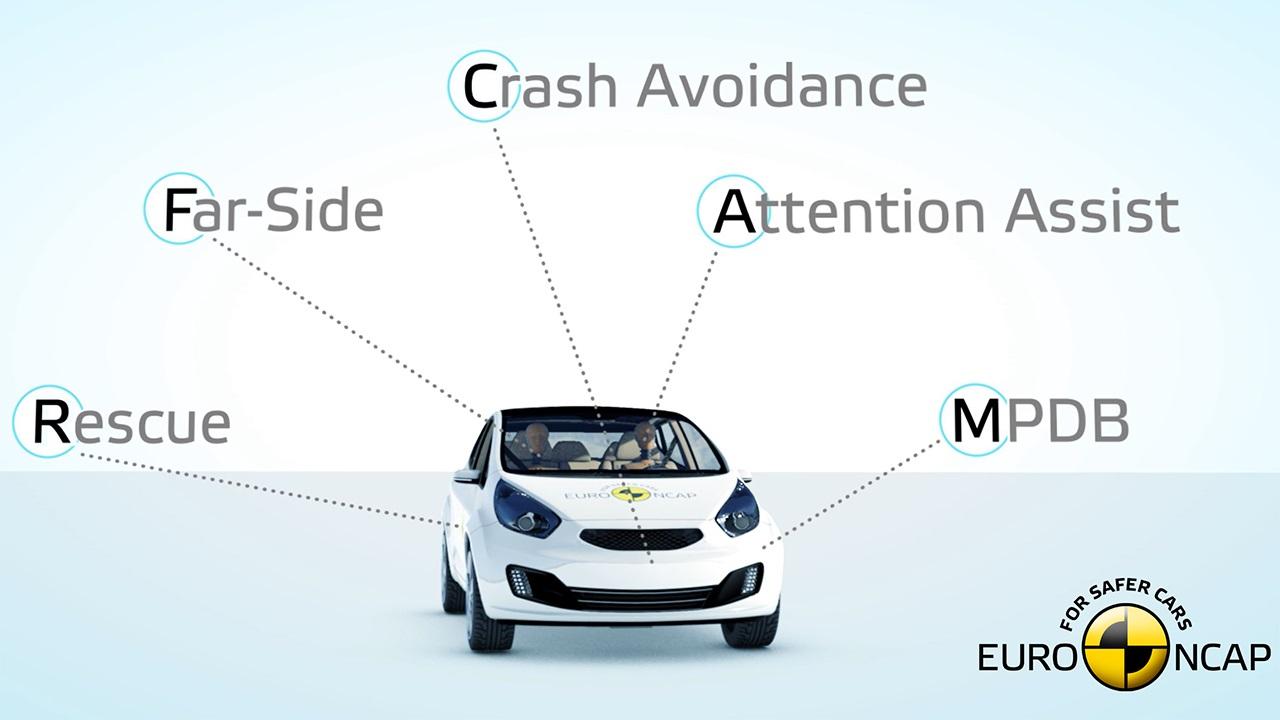The European New Car Assessment Programme (Euro NCAP) is introducing new tests to address long-standing needs in occupant protection, improve post-crash protection and promote the latest advanced driver-assistance technology.
One of the major changes is the inclusion of a new ‘moving barrier to moving car’ frontal crash test, which replaces the regulation-based offset-deformable barrier test. The new test better evaluates the protection of occupants inside the car and assesses how the car’s front-end structures contribute to injuries. Euro NCAP considers the Mobile Progressive Deformable Barrier, its unique method to rate vehicle compatibility and the first adoption of the “THOR” mid-sized male crash test dummy as important innovations towards this.
Side impact updates include adjustments to the near-side barrier test speed and mass to increase the severity of the test. Euro NCAP will analyse far-side impact protection to focus on driver protection and the potential interaction between the driver and front seat passenger.
The company says it is adding new and challenging test scenarios to rate automated emergency braking (AEB) technology for cars and vulnerable road users, including ‘back over’ situations and turning at a crossing. In addition, Euro NCAP said it has taken its first step in evaluating driver status monitoring systems, which are designed to detect driver fatigue and distraction, as part of its Safety Assist assessment.
In partnership with CTIF, the International Association of Fire & Rescue Services, Euro NCAP developed new rating rules for increased post-crash safety, with manufacturers to receive bonus points for rescue information that is more accurate and easily available.
The company is urging consumers to be mindful when comparing new ratings to those from previous years – the new systems aren’t directly comparable to older ratings.

